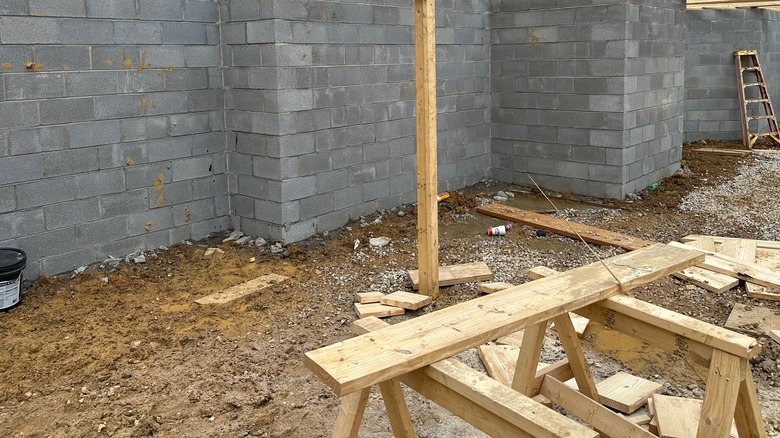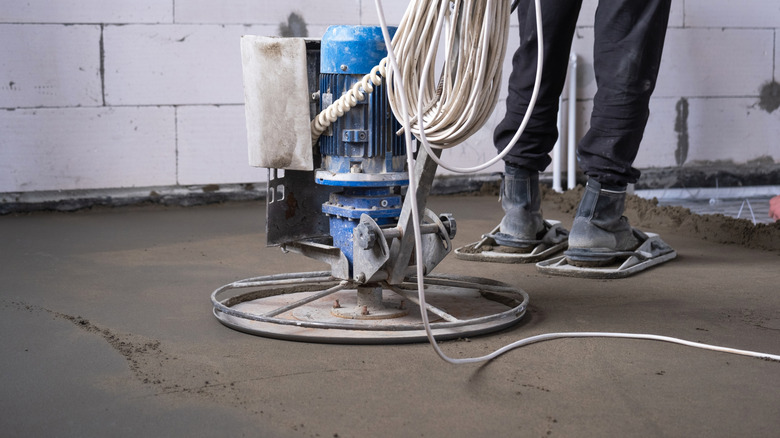One Of The Top Flooring Solutions For Covering Your Basement's Dirt Floor
There are many types of flooring for your home, however, what's the best flooring material for a basement when you're dealing with a dirt floor? Of course, you can leave it the way it is, provided you can enjoy the creepy horror movies enacted there, typically starring rodents, termites, and dust — all with a good dose of mustiness. Plus, there's the problem of radon gas, a harmful radioactive element that can creep into spaces we use through bare earth floors, vents, and cracks. Although you can have legitimate concerns about the costs involved, covering your basement's dirt floor makes a lot of sense. You can pour concrete — like many do — or you can pour gravel, lay a plastic sheet, or install a crawl space vapor barrier. You can also opt for something more sustainable and more eco-friendly.
You may not have heard of it, but a rammed earth floor can be the hack you've been looking for. For starters, nothing could be more natural. Some studies show that walking barefoot on earth — like what would happen if you have a rammed earth floor — can improve sleep and stimulate the production of antioxidants, the tiny molecules that help the body deal with free radicals.
Why a rammed earth floor is a perfect cover for your basement's dirt floor (& how to lay it)
A rammed earth floor involves placing three layers of soil (of different types) on a basement and compacting them to achieve a solid, stabilized earth mixture. Rammed earth floors have several benefits. For example, they facilitate stable internal temperatures (hence reduce the need for cooling or heating systems) and are fairly durable. Most of all, a rammed earth floor will give your basement that clean, sleek look it deserves. So, how should you lay it? You first dig and shovel the dirt out, preferably until the substrate feels solid and compact. After this, lay several inches of gravel to prevent water from rising into the basement floor. To prevent moisture from escaping upwards, follow this with a vapor barrier, the type used to prepare slabs.
Although the next step — insulation — is optional, it can be great, especially for keeping heat inside. Otherwise, the heat will escape to the thermal mass below the ground. Consider installing insulation, particularly if you live in a cold area. Thereafter, put the base layer, a mixture of clay and sand, in a ratio of about 1 to 4. To knit it together, add lots of straw or what is available in your area. After leveling this layer, apply a final 3 millimeters of clay, then seal it with a hardening oil like linseed. That's how to creatively transform a messy basement dirt floor into a clean and sleek basement.

